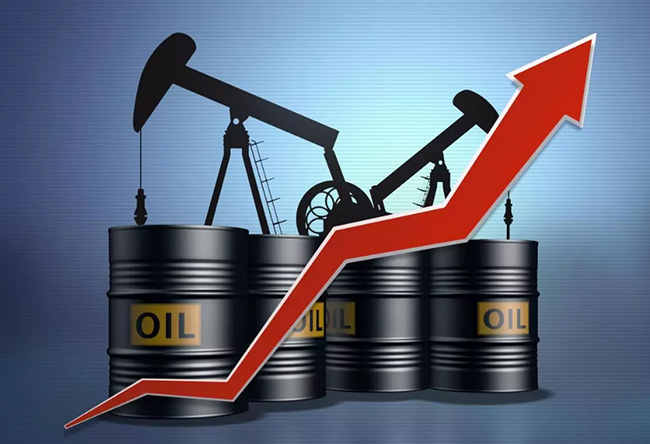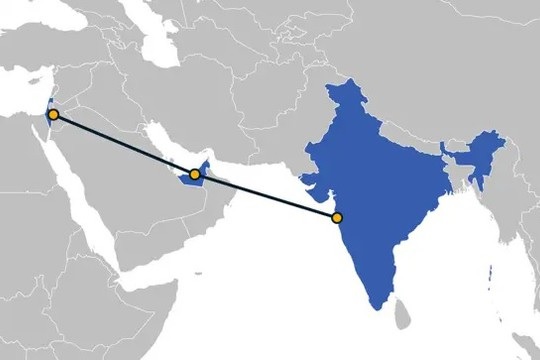A surprise multifront attack on Israel by the Palestinian group Hamas will likely lead to a massive military retaliation on Gaza and possibly to a wider conflagration with repercussions beyond the Middle East, writes Bloomberg.
The flare-up — involving infiltrations, capture of soldiers and civilians, and thousands of rockets — comes at a time of enormous diplomatic sensitivity and a moment of weakness for Israel that analysts have been warning its enemies might seek to exploit.
The country is in negotiations with the US and Saudi Arabia on a complex three-way deal in which Washington would offer security guarantees to Riyadh. The Saudis, for their part, would normalize relations with Israel. Israel has also been talking with Turkey and others about gas exports to Europe along with corridors for trade from Asia.
Internally, Israel has been embroiled in political turmoil that left it vulnerable. Last April, the nation found itself briefly engaged on three fronts simultaneously — Gaza, Lebanon and Syria — after rocket fire came from all three. Part of the trigger was that Israeli Jews entered the grounds of the al Aqsa mosque compound in Jerusalem. This past week, that too occurred.
“I can’t exclude a multi arena war that will cause a very very severe threat to the state of Israel,” Giora Eiland, a former national security adviser in Israel, said in a briefing with journalists. He added, though, that Israel prefers to fight one enemy at a time and would not be quick to open another front.
Prime Minister Benjamin Netanyahu, the focus of the weekly anti-government demonstrations, will likely find a moment of national unity after the attack, leading opposition politicians to back a strong response. The protest that was due to take place on Saturday night was called off.
“Citizens of Israel, we are at war,” Netanyahu said in a videotaped statement. “Not in an operation. Not some back-and-forth. At war.” He added: “The enemy will pay a price it has never known.”
The last major Israeli military operation against Hamas in Gaza was in 2014. It lasted for seven weeks and killed more than 2,000 Palestinians there along with dozens of Israelis.
Part of the Saudi deal is expected to involve Israeli concessions in the West Bank to strengthen the Palestinian Authority and add to the possibility of an independent Palestinian state. That arrangement will be in jeopardy should the latest fighting lead Israel to extend its operation into the West Bank.
Saudi Arabia wants US protection assurances partly because of its own concerns about Iran. If Iran is shown to be playing a key role in Saturday’s attack on Israel, that could affect those negotiations.
Adding to the pressure on Netanyahu, the attack is being widely described as the worst lapse of Israeli defense since Syria and Egypt launched an unexpected war on the country 50 years ago.
“This appears to be a colossal intelligence failure by the Israeli establishment,” said Jonathan Conricus, a former Israeli military spokesman. “What we are seeing indicates long and meticulous planning that should have been picked up. Very tough questions are being asked and hard answers will have to be given.”
The issue now is how the confrontation escalates, said Miri Eisen, a retired colonel who worked in military intelligence and now runs a counter-terrorism institute at Reichman University in Israel. Whether this will lead to a bigger war “is the $64,000 question,” she said. “If Iran has a finger in this, do we now preempt against the next stage?”

For oil, it’s not 1973 again – but it could still turn ugly, notes Bloomberg at another comment. Crude prices are likely to rise after the surprise Hamas attack on Israel, but there’s still plenty of capacity to tap.
History doesn’t repeat itself, but it often rhymes. On the eve of the 50th anniversary of the world’s first oil crisis, the parallels between October 2023 and October 1973 are easy to draw: A surprise attack on Israel and oil prices rising. But the resemblance ends there.
The situation is fluid, and for the oil market, everything depends about how Israel responds to Hamas, which launched the attack, and Iran, which typically pulls the strings of the Palestinian group. Still, we can draw a few tentative conclusions:
1) The crisis isn’t a repeat of October 1973. Arab countries aren't attacking Israel in unison. Egypt, Jordan, Syria, Saudi Arabia and the rest of the Arab world are watching the events from the sidelines, not shaping them.
2) The oil market itself doesn't have any of the pre-October 1973 characteristics. Back then, oil demand was surging, and the world had exhausted all its spare production capacity. Today, consumption growth has moderated, and is likely to slow further as electric vehicles become a reality. In addition, Saudi Arabia and the United Arab Emirates have significant spare capacity that they use to curb prices – if they choose to do so.
3) As importantly, today, OPEC nations aren’t trying to boost prices beyond a few extra dollars. Riyadh would be content with oil prices rising another 10-20% higher, to just above $100 a barrel from $85 currently, rather than pushing them more than 100% higher to $200 a barrel. Just before the October 1973 oil embargo, OPEC nations unilaterally hiked the official petroleum prices by about 70%. Although the embargo is the element most vividly remembered of the crisis, the price hike was as crucial.
4) The fallout could yet have an impact on oil markets in 2023 and 2024. The most immediate impact could come if Israel concludes that Hamas acted on instructions of Tehran. In that scenario, oil prices could go much higher. In 2019, Iran demonstrated, via Yemeni proxies, that it’s able to knock down a significant chunk of Saudi oil production capacity. It could do the same as retaliation if it finds itself under Israel or American attack.
5) Even if Israel doesn’t immediately respond to Iran, the repercussions will likely affect Iranian oil production. Since late 2022, Washington has turned a blind eye to surging Iranian oil exports, bypassing American sanctions. The priority in Washington was an informal détente with Tehran. As a result, Iranian oil output has surged nearly 700,000 barrels a day this year – the second-largest source of incremental supply in 2023, behind only US shale. The White House is now likely to enforce the sanctions. That could be enough to push oil prices to $100 a barrel, and potentially beyond.
6) Russia will benefit from any Middle East oil crisis. If Washington enforces sanctions against Iran, it could create space for Russia’s own sanctioned barrels to both win market share and achieve higher prices. One of the reasons why the White House turned a blind eye on Iranian oil exports is because it hurt Russia. In turn, Venezuela could also benefit, with the White House relaxing sanctions to ease market pressure.
7) The Saudi-Israeli diplomatic deal, which many had penciled in for early-to-mid 2024, is a casualty. Even if Riyadh is likely furious with Hamas, it’s difficult to see how Crown Prince Mohammed bin Salman would be able to sell the deal domestically. That, in turn, removes the potential for Saudi Arabia pumping more oil to help passage of the deal in Washington. The other victim of the Hamas-Isaeli war is the Saudi-Iranian rapprochement, which itself was another bearish element for oil.
8) Finally, a key difference from 1973, Washington can tap its Strategic Petroleum Reserve to limit the impact on gasoline prices — and on President Joe Biden’s approval rating. If oil prices surge because of tension in the Middle East, the White House is sure to tap the SPR. Although it’s at its lowest level in 40 years, the reserve still has enough oil to deal with another crisis.

The India-Middle East-Europe Economic Corridor (IMEC) via Dubai-Saudi-Isreal (map) was launched last month on the sidelines of the G20 Summit in New Delhi is effectively dead, writes Indian ‘Business Today’.
Hamas' attack on Israel and subsequent response by Tel Aviv can reverse some of the ambitious initiatives in the Middle East. The US has been pushing for normalisation of the relationship between Saudi Arabia and Israel, and an economic corridor from India to Europe that will pass through the Middle East. The fate of these two now hangs in balance as Tel Aviv has declared war, and is bombarding the Gaza Strip following the deadliest attack in years by the militant organisation Hamas on Israel.
The India-Middle East-Europe Economic Corridor (IMEC) was launched last month on the sidelines of the G20 Summit in New Delhi. The IMEC will comprise two separate corridors, the east corridor connecting India to the Arabian Gulf and the northern corridor connecting the Arabian Gulf to Europe. It will include a railway that will provide a cross-border ship-to-rail transit network, enabling goods and services to transit to, from, and between India, the UAE, Saudi Arabia, Jordan, Israel, and Europe.
"Saudi Arabia, Iran, and Qatar have voiced support for Hamas. The US plans for IMEC corridor or Saudi-Israel peace now don't look promising."
So, the India-Middle East Economic Corridor is effectively dead. The idea of seamlessly connecting the Gulf Arab nations to Israel through Jordan was always American-Israeli fantasy, notes Indian site.
read more in our Telegram-channel https://t.me/The_International_Affairs

 12:08 09.10.2023 •
12:08 09.10.2023 •























